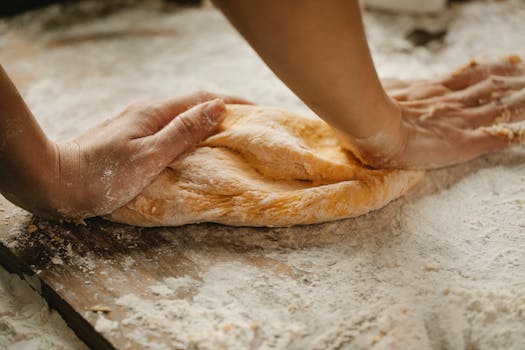Benefits
Enhanced Gluten Formation
Optimal Dough Rising
Improved Bread Texture and Structure
Versatility in Baking Various Bread Types
Get creative with bread flour
Creating artisan sourdough breads that showcase the flour's high protein content, leading to a chewy texture and beautiful rise
Crafting homemade pizza dough, where the flour's gluten strength lends itself to a crispy yet tender crust
Experimenting with homemade pasta, using bread flour for a more resilient dough that holds up to rolling and shaping
Developing thick, chewy bagels, where bread flour contributes to the dense, chewy texture bagel lovers crave
Creating steam buns (bao), utilizing bread flour for its ability to produce a fluffy, light texture that contrasts deliciously with savory or sweet fillings
Something you can make with bread flour
Origin
Bread flour is a type of flour that is specifically milled for baking bread. It is made from hard wheat varieties, which have a higher protein content compared to other types of wheat. The higher protein content gives bread flour its ability to develop gluten, a protein that provides structure and elasticity to bread dough. \n\nThe origin of bread flour can be traced back to ancient civilizations, where people began cultivating wheat and grinding it into flour for making bread. The development of bread flour as a distinct type of flour can be attributed to the advancements in milling technology during the industrial revolution. In the 19th century, roller mills were introduced, which allowed for finer grinding of wheat and separation of different components of the grain. This led to the production of refined white flour and the ability to produce flour with specific protein levels, such as bread flour.\n\nToday, bread flour is widely available and used in various bread recipes around the world. It is commonly used in artisan bread-making, where a strong gluten structure is



